Essay on Child Labour: Causes, Effects, Solutions, and Global Impact
VerifiedAdded on 2022/12/23
|6
|1316
|63
Essay
AI Summary
This essay delves into the multifaceted issue of child labour, exploring its causes, effects, and potential solutions. It identifies poverty, lack of education, cultural beliefs, and economic factors as primary drivers of child labour. The essay highlights the detrimental consequences, including physical and mental health issues, exploitation, and limited opportunities for education and social mobility. It examines the role of the UK government and international organizations in combating child labour, including funding programs and promoting awareness. Furthermore, the essay emphasizes the importance of individual actions, such as consumer choices and supporting organizations, in eradicating child labour. The conclusion underscores the devastating impact of child labour on a child's life and reiterates the need for collaborative efforts to eliminate this global problem.
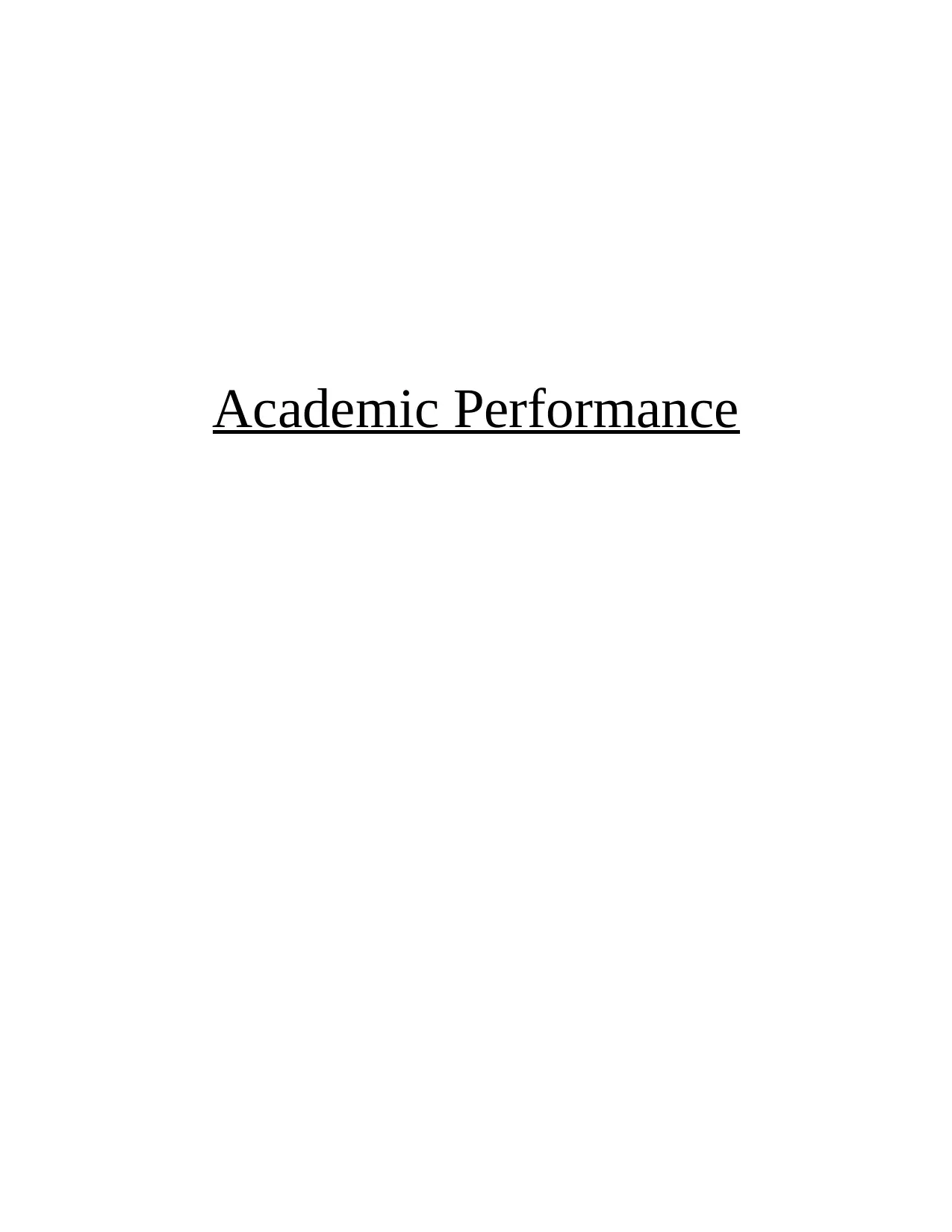
Academic Performance
Paraphrase This Document
Need a fresh take? Get an instant paraphrase of this document with our AI Paraphraser
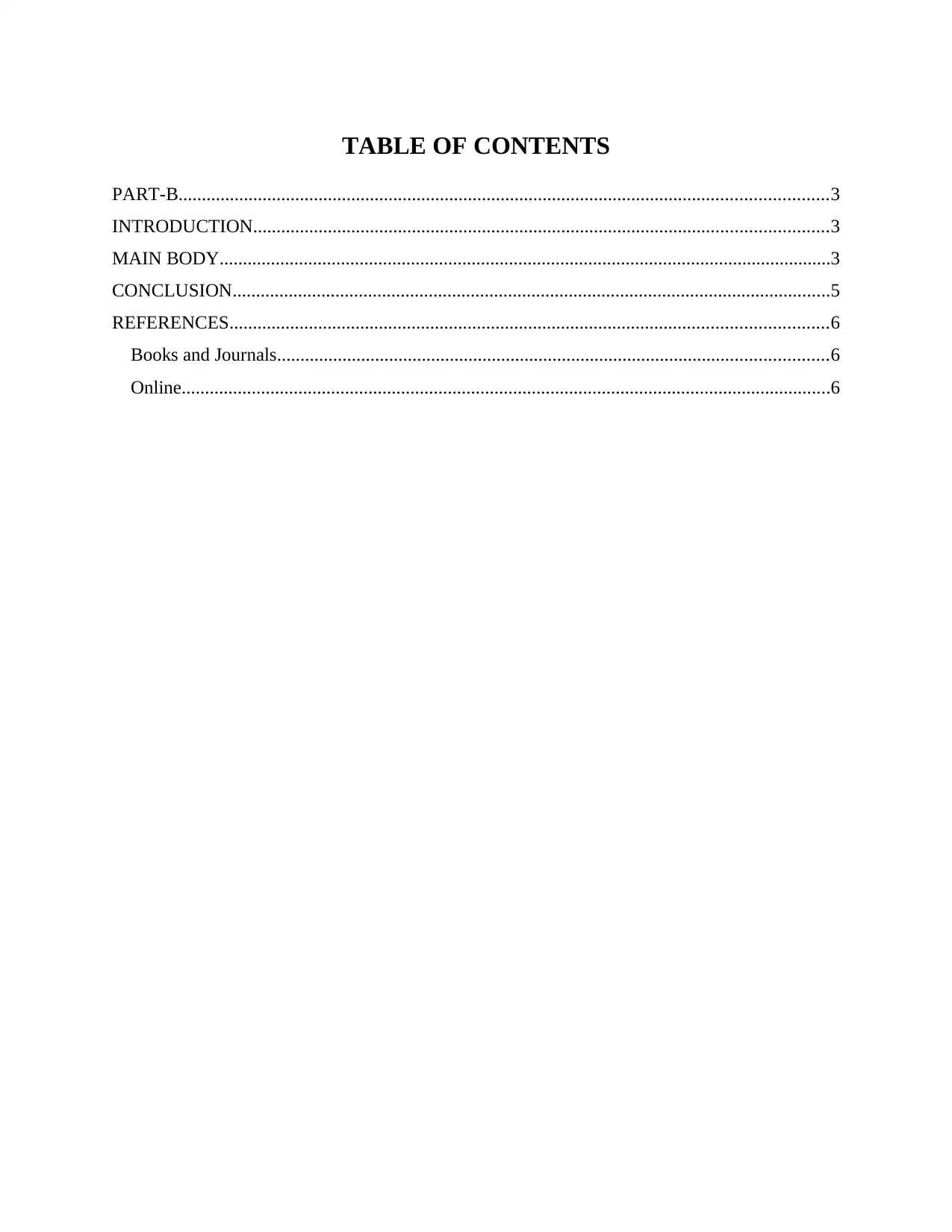
TABLE OF CONTENTS
PART-B...........................................................................................................................................3
INTRODUCTION...........................................................................................................................3
MAIN BODY...................................................................................................................................3
CONCLUSION................................................................................................................................5
REFERENCES................................................................................................................................6
Books and Journals......................................................................................................................6
Online...........................................................................................................................................6
PART-B...........................................................................................................................................3
INTRODUCTION...........................................................................................................................3
MAIN BODY...................................................................................................................................3
CONCLUSION................................................................................................................................5
REFERENCES................................................................................................................................6
Books and Journals......................................................................................................................6
Online...........................................................................................................................................6
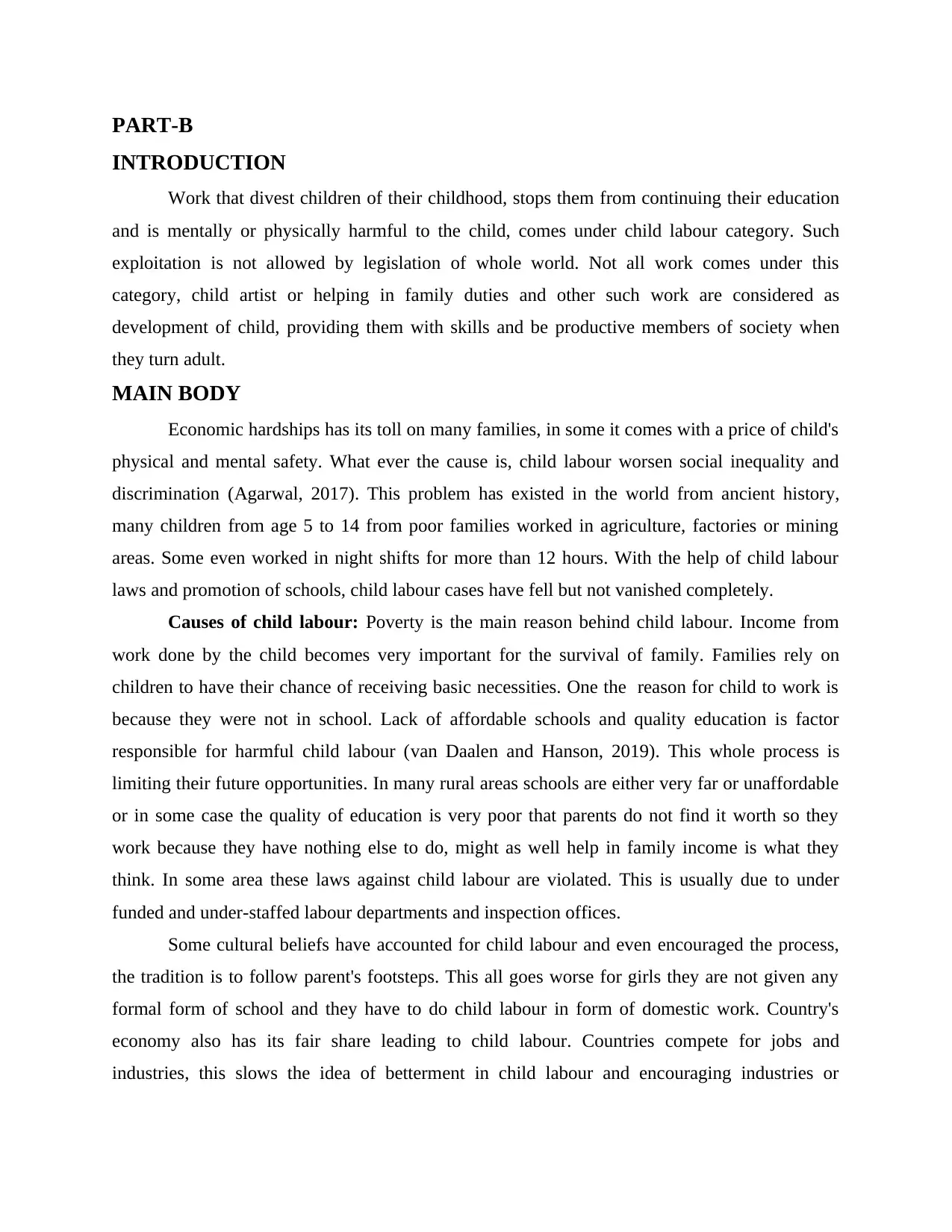
PART-B
INTRODUCTION
Work that divest children of their childhood, stops them from continuing their education
and is mentally or physically harmful to the child, comes under child labour category. Such
exploitation is not allowed by legislation of whole world. Not all work comes under this
category, child artist or helping in family duties and other such work are considered as
development of child, providing them with skills and be productive members of society when
they turn adult.
MAIN BODY
Economic hardships has its toll on many families, in some it comes with a price of child's
physical and mental safety. What ever the cause is, child labour worsen social inequality and
discrimination (Agarwal, 2017). This problem has existed in the world from ancient history,
many children from age 5 to 14 from poor families worked in agriculture, factories or mining
areas. Some even worked in night shifts for more than 12 hours. With the help of child labour
laws and promotion of schools, child labour cases have fell but not vanished completely.
Causes of child labour: Poverty is the main reason behind child labour. Income from
work done by the child becomes very important for the survival of family. Families rely on
children to have their chance of receiving basic necessities. One the reason for child to work is
because they were not in school. Lack of affordable schools and quality education is factor
responsible for harmful child labour (van Daalen and Hanson, 2019). This whole process is
limiting their future opportunities. In many rural areas schools are either very far or unaffordable
or in some case the quality of education is very poor that parents do not find it worth so they
work because they have nothing else to do, might as well help in family income is what they
think. In some area these laws against child labour are violated. This is usually due to under
funded and under-staffed labour departments and inspection offices.
Some cultural beliefs have accounted for child labour and even encouraged the process,
the tradition is to follow parent's footsteps. This all goes worse for girls they are not given any
formal form of school and they have to do child labour in form of domestic work. Country's
economy also has its fair share leading to child labour. Countries compete for jobs and
industries, this slows the idea of betterment in child labour and encouraging industries or
INTRODUCTION
Work that divest children of their childhood, stops them from continuing their education
and is mentally or physically harmful to the child, comes under child labour category. Such
exploitation is not allowed by legislation of whole world. Not all work comes under this
category, child artist or helping in family duties and other such work are considered as
development of child, providing them with skills and be productive members of society when
they turn adult.
MAIN BODY
Economic hardships has its toll on many families, in some it comes with a price of child's
physical and mental safety. What ever the cause is, child labour worsen social inequality and
discrimination (Agarwal, 2017). This problem has existed in the world from ancient history,
many children from age 5 to 14 from poor families worked in agriculture, factories or mining
areas. Some even worked in night shifts for more than 12 hours. With the help of child labour
laws and promotion of schools, child labour cases have fell but not vanished completely.
Causes of child labour: Poverty is the main reason behind child labour. Income from
work done by the child becomes very important for the survival of family. Families rely on
children to have their chance of receiving basic necessities. One the reason for child to work is
because they were not in school. Lack of affordable schools and quality education is factor
responsible for harmful child labour (van Daalen and Hanson, 2019). This whole process is
limiting their future opportunities. In many rural areas schools are either very far or unaffordable
or in some case the quality of education is very poor that parents do not find it worth so they
work because they have nothing else to do, might as well help in family income is what they
think. In some area these laws against child labour are violated. This is usually due to under
funded and under-staffed labour departments and inspection offices.
Some cultural beliefs have accounted for child labour and even encouraged the process,
the tradition is to follow parent's footsteps. This all goes worse for girls they are not given any
formal form of school and they have to do child labour in form of domestic work. Country's
economy also has its fair share leading to child labour. Countries compete for jobs and
industries, this slows the idea of betterment in child labour and encouraging industries or
⊘ This is a preview!⊘
Do you want full access?
Subscribe today to unlock all pages.

Trusted by 1+ million students worldwide
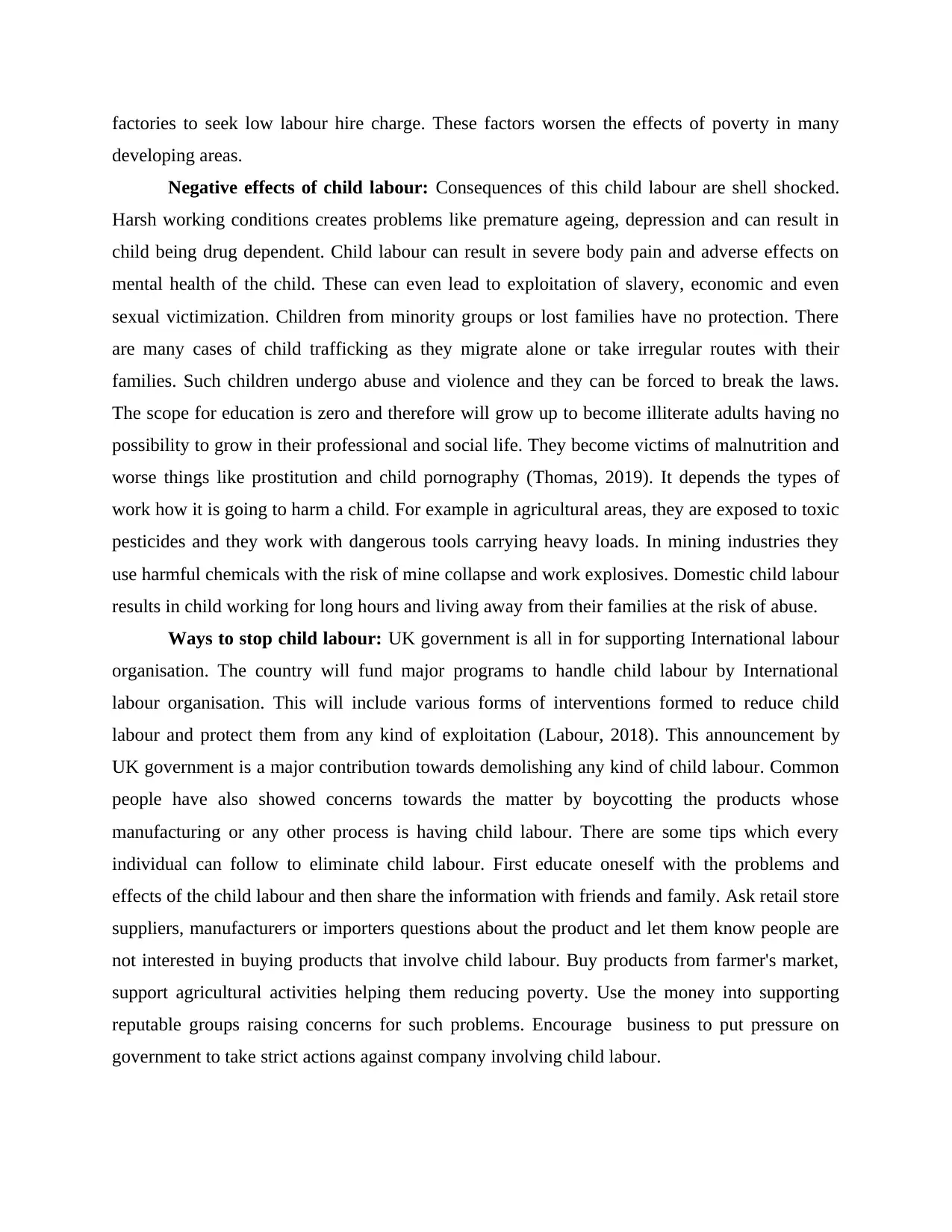
factories to seek low labour hire charge. These factors worsen the effects of poverty in many
developing areas.
Negative effects of child labour: Consequences of this child labour are shell shocked.
Harsh working conditions creates problems like premature ageing, depression and can result in
child being drug dependent. Child labour can result in severe body pain and adverse effects on
mental health of the child. These can even lead to exploitation of slavery, economic and even
sexual victimization. Children from minority groups or lost families have no protection. There
are many cases of child trafficking as they migrate alone or take irregular routes with their
families. Such children undergo abuse and violence and they can be forced to break the laws.
The scope for education is zero and therefore will grow up to become illiterate adults having no
possibility to grow in their professional and social life. They become victims of malnutrition and
worse things like prostitution and child pornography (Thomas, 2019). It depends the types of
work how it is going to harm a child. For example in agricultural areas, they are exposed to toxic
pesticides and they work with dangerous tools carrying heavy loads. In mining industries they
use harmful chemicals with the risk of mine collapse and work explosives. Domestic child labour
results in child working for long hours and living away from their families at the risk of abuse.
Ways to stop child labour: UK government is all in for supporting International labour
organisation. The country will fund major programs to handle child labour by International
labour organisation. This will include various forms of interventions formed to reduce child
labour and protect them from any kind of exploitation (Labour, 2018). This announcement by
UK government is a major contribution towards demolishing any kind of child labour. Common
people have also showed concerns towards the matter by boycotting the products whose
manufacturing or any other process is having child labour. There are some tips which every
individual can follow to eliminate child labour. First educate oneself with the problems and
effects of the child labour and then share the information with friends and family. Ask retail store
suppliers, manufacturers or importers questions about the product and let them know people are
not interested in buying products that involve child labour. Buy products from farmer's market,
support agricultural activities helping them reducing poverty. Use the money into supporting
reputable groups raising concerns for such problems. Encourage business to put pressure on
government to take strict actions against company involving child labour.
developing areas.
Negative effects of child labour: Consequences of this child labour are shell shocked.
Harsh working conditions creates problems like premature ageing, depression and can result in
child being drug dependent. Child labour can result in severe body pain and adverse effects on
mental health of the child. These can even lead to exploitation of slavery, economic and even
sexual victimization. Children from minority groups or lost families have no protection. There
are many cases of child trafficking as they migrate alone or take irregular routes with their
families. Such children undergo abuse and violence and they can be forced to break the laws.
The scope for education is zero and therefore will grow up to become illiterate adults having no
possibility to grow in their professional and social life. They become victims of malnutrition and
worse things like prostitution and child pornography (Thomas, 2019). It depends the types of
work how it is going to harm a child. For example in agricultural areas, they are exposed to toxic
pesticides and they work with dangerous tools carrying heavy loads. In mining industries they
use harmful chemicals with the risk of mine collapse and work explosives. Domestic child labour
results in child working for long hours and living away from their families at the risk of abuse.
Ways to stop child labour: UK government is all in for supporting International labour
organisation. The country will fund major programs to handle child labour by International
labour organisation. This will include various forms of interventions formed to reduce child
labour and protect them from any kind of exploitation (Labour, 2018). This announcement by
UK government is a major contribution towards demolishing any kind of child labour. Common
people have also showed concerns towards the matter by boycotting the products whose
manufacturing or any other process is having child labour. There are some tips which every
individual can follow to eliminate child labour. First educate oneself with the problems and
effects of the child labour and then share the information with friends and family. Ask retail store
suppliers, manufacturers or importers questions about the product and let them know people are
not interested in buying products that involve child labour. Buy products from farmer's market,
support agricultural activities helping them reducing poverty. Use the money into supporting
reputable groups raising concerns for such problems. Encourage business to put pressure on
government to take strict actions against company involving child labour.
Paraphrase This Document
Need a fresh take? Get an instant paraphrase of this document with our AI Paraphraser
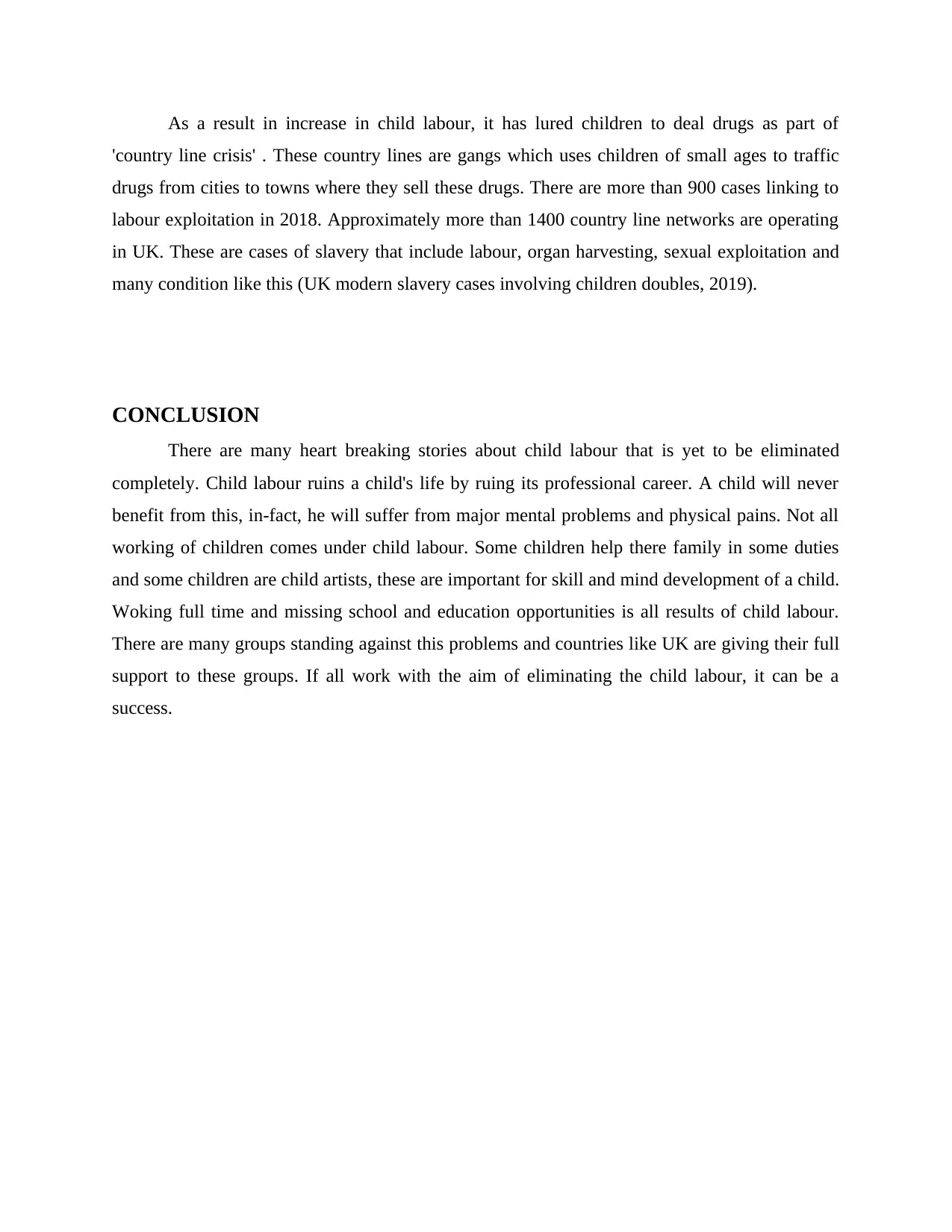
As a result in increase in child labour, it has lured children to deal drugs as part of
'country line crisis' . These country lines are gangs which uses children of small ages to traffic
drugs from cities to towns where they sell these drugs. There are more than 900 cases linking to
labour exploitation in 2018. Approximately more than 1400 country line networks are operating
in UK. These are cases of slavery that include labour, organ harvesting, sexual exploitation and
many condition like this (UK modern slavery cases involving children doubles, 2019).
CONCLUSION
There are many heart breaking stories about child labour that is yet to be eliminated
completely. Child labour ruins a child's life by ruing its professional career. A child will never
benefit from this, in-fact, he will suffer from major mental problems and physical pains. Not all
working of children comes under child labour. Some children help there family in some duties
and some children are child artists, these are important for skill and mind development of a child.
Woking full time and missing school and education opportunities is all results of child labour.
There are many groups standing against this problems and countries like UK are giving their full
support to these groups. If all work with the aim of eliminating the child labour, it can be a
success.
'country line crisis' . These country lines are gangs which uses children of small ages to traffic
drugs from cities to towns where they sell these drugs. There are more than 900 cases linking to
labour exploitation in 2018. Approximately more than 1400 country line networks are operating
in UK. These are cases of slavery that include labour, organ harvesting, sexual exploitation and
many condition like this (UK modern slavery cases involving children doubles, 2019).
CONCLUSION
There are many heart breaking stories about child labour that is yet to be eliminated
completely. Child labour ruins a child's life by ruing its professional career. A child will never
benefit from this, in-fact, he will suffer from major mental problems and physical pains. Not all
working of children comes under child labour. Some children help there family in some duties
and some children are child artists, these are important for skill and mind development of a child.
Woking full time and missing school and education opportunities is all results of child labour.
There are many groups standing against this problems and countries like UK are giving their full
support to these groups. If all work with the aim of eliminating the child labour, it can be a
success.
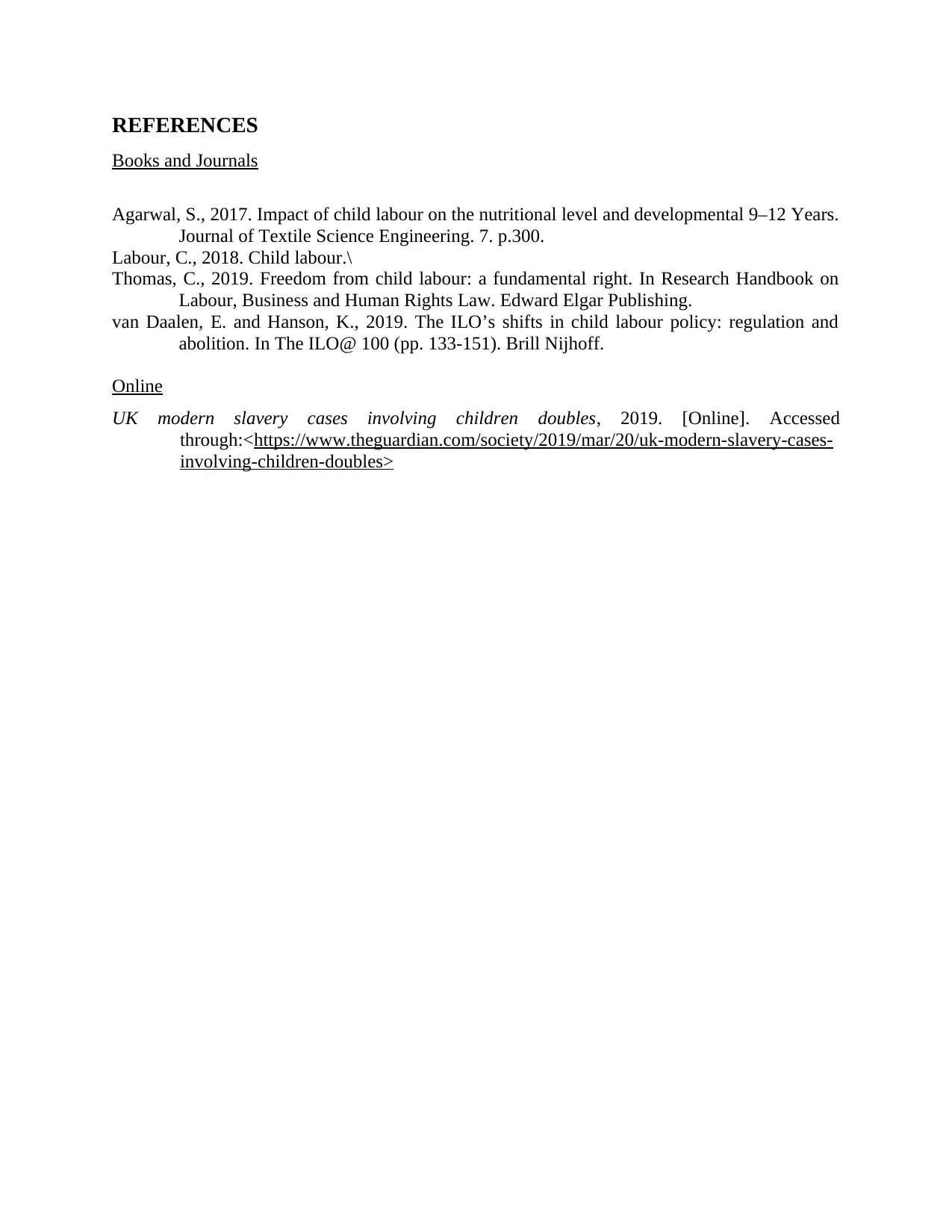
REFERENCES
Books and Journals
Agarwal, S., 2017. Impact of child labour on the nutritional level and developmental 9–12 Years.
Journal of Textile Science Engineering. 7. p.300.
Labour, C., 2018. Child labour.\
Thomas, C., 2019. Freedom from child labour: a fundamental right. In Research Handbook on
Labour, Business and Human Rights Law. Edward Elgar Publishing.
van Daalen, E. and Hanson, K., 2019. The ILO’s shifts in child labour policy: regulation and
abolition. In The ILO@ 100 (pp. 133-151). Brill Nijhoff.
Online
UK modern slavery cases involving children doubles, 2019. [Online]. Accessed
through:<https://www.theguardian.com/society/2019/mar/20/uk-modern-slavery-cases-
involving-children-doubles>
Books and Journals
Agarwal, S., 2017. Impact of child labour on the nutritional level and developmental 9–12 Years.
Journal of Textile Science Engineering. 7. p.300.
Labour, C., 2018. Child labour.\
Thomas, C., 2019. Freedom from child labour: a fundamental right. In Research Handbook on
Labour, Business and Human Rights Law. Edward Elgar Publishing.
van Daalen, E. and Hanson, K., 2019. The ILO’s shifts in child labour policy: regulation and
abolition. In The ILO@ 100 (pp. 133-151). Brill Nijhoff.
Online
UK modern slavery cases involving children doubles, 2019. [Online]. Accessed
through:<https://www.theguardian.com/society/2019/mar/20/uk-modern-slavery-cases-
involving-children-doubles>
⊘ This is a preview!⊘
Do you want full access?
Subscribe today to unlock all pages.

Trusted by 1+ million students worldwide
1 out of 6
Related Documents
Your All-in-One AI-Powered Toolkit for Academic Success.
+13062052269
info@desklib.com
Available 24*7 on WhatsApp / Email
![[object Object]](/_next/static/media/star-bottom.7253800d.svg)
Unlock your academic potential
Copyright © 2020–2025 A2Z Services. All Rights Reserved. Developed and managed by ZUCOL.





